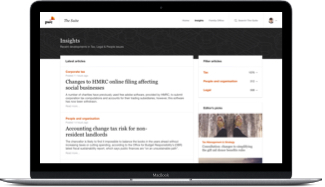The case involved an arrangement in which a parent company had some loan assets that had a high market value but were not recognised in its accounts. The loan assets were contributed into a wholly owned subsidiary (in a way that the group continuity rules did not apply). The parent company recognised no profit in its accounts. However, the subsidiary recognised the assets at market value. So the result was no profit for the parent and, when the loan assets were subsequently realised by the subsidiary, no profit for the subsidiary. Assuming the tax treatment followed the accounts, this would have enabled the group to realise the market value of the loan assets without being taxed on it. At the First-Tier Tribunal (FTT) it was held that the accounting treatments adopted by the parent and subsidiary were GAAP compliant. However, the FTT held that this could be overridden by the "fairly represents" rule in s84 FA 1996 to impute taxable profits in the parent company equal to the market value of the assets contributed to the subsidiary. (The "fairly represents" rule was rewritten into s307 CTA 2009, but was repealed by F(No.2)A 2015 for accounting periods beginning on or after 1 January 2016). The taxpayer appealed to the UT, but the UT upheld the FTT's decision. The taxpayer then appealed to the Court of Appeal, which has also upheld the decision of the FTT and the UT.

